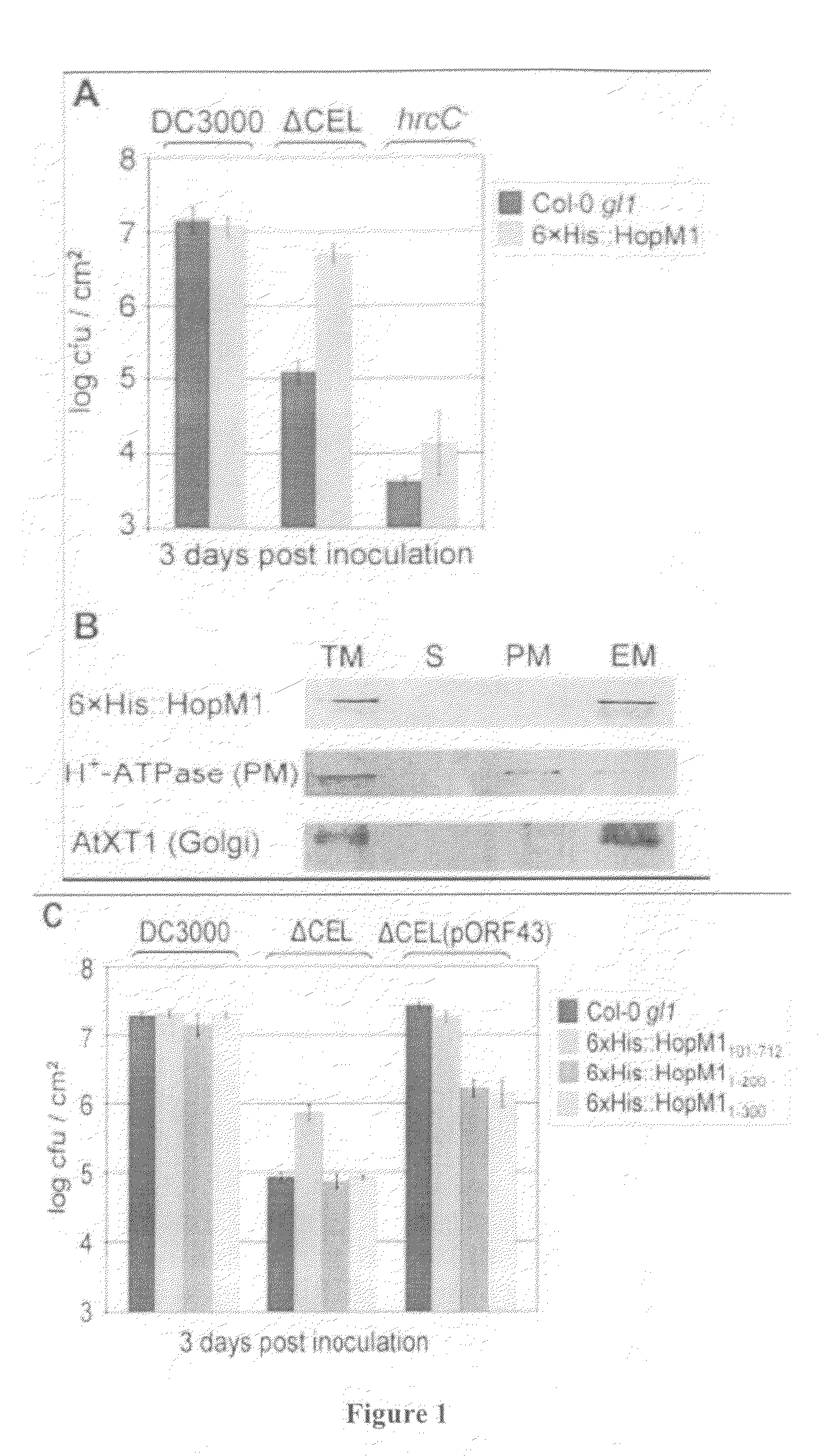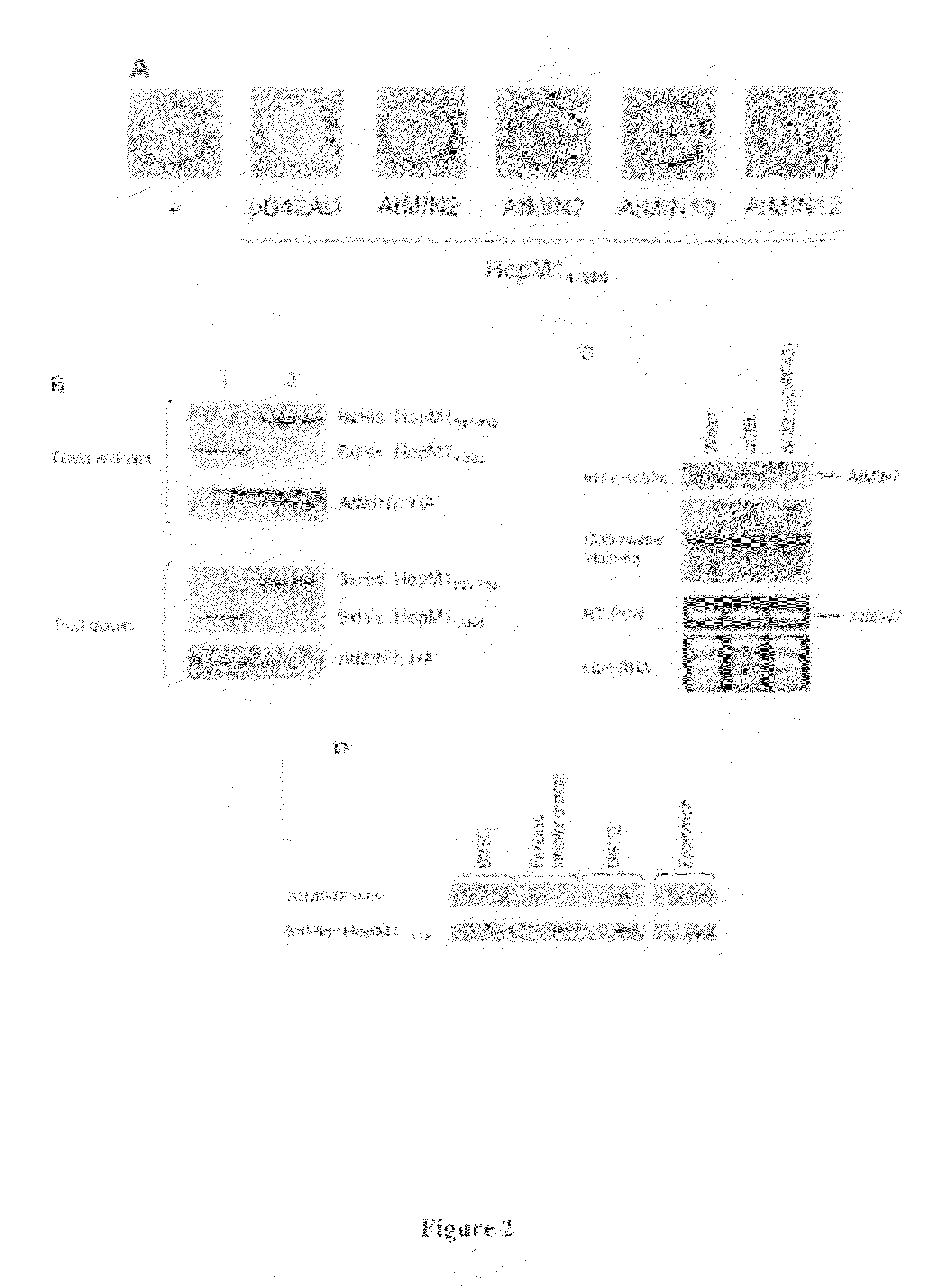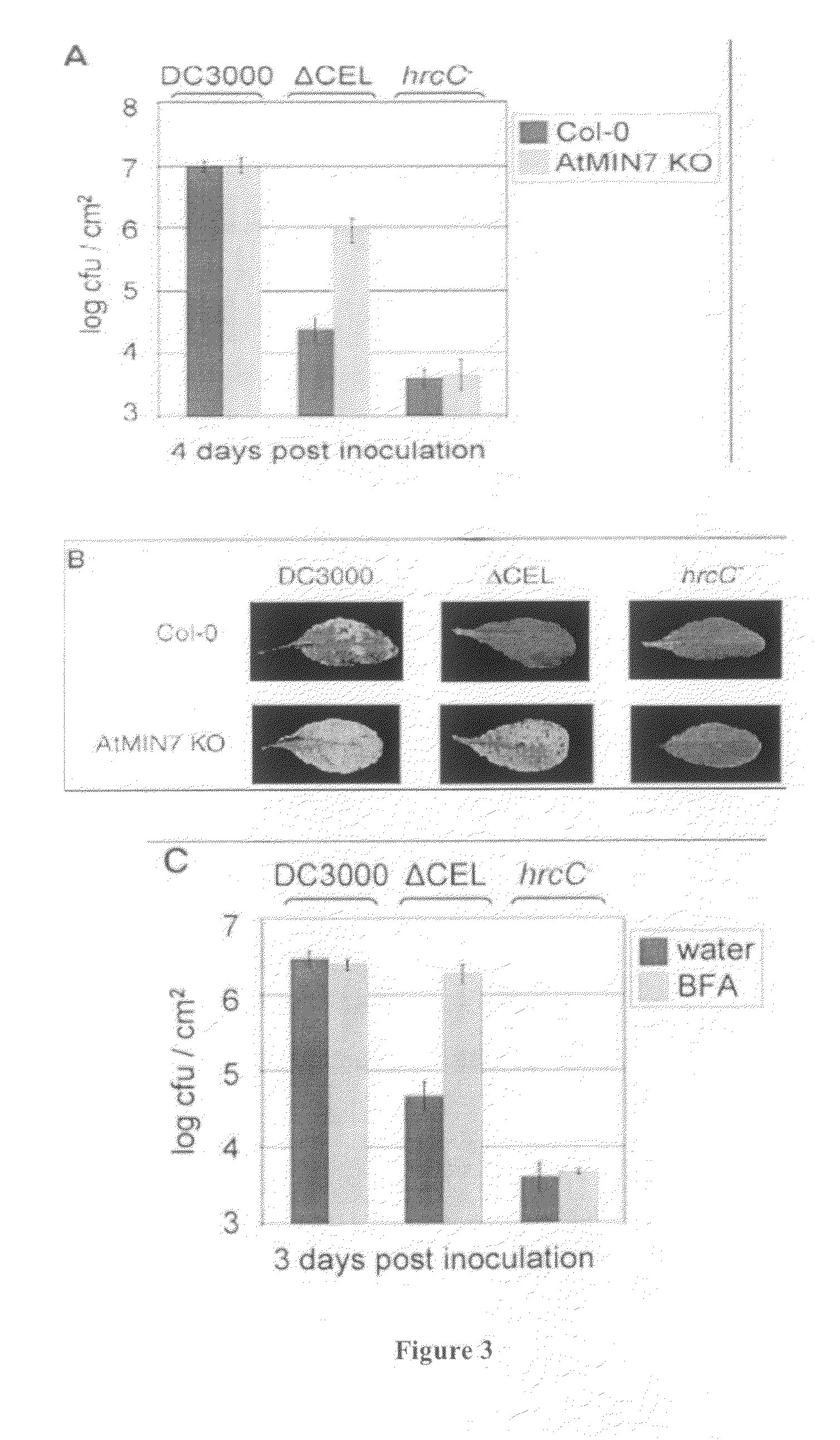HOPM1 Mediated disease resistance to Pseudomonas syringae in Arabidopsis
a technology of hopm1 and pseudomonas syringae, which is applied in the field of enhancing can solve the problems of reducing the resistance of plants to these treatment methods, and obscuring the molecular targets of bacterial virulence proteins important for plant disease development, so as to enhance the plant immunity against bacterial pathogens, enhance the effect of hopm11-300 mediated protection
- Summary
- Abstract
- Description
- Claims
- Application Information
AI Technical Summary
Benefits of technology
Problems solved by technology
Method used
Image
Examples
example i
[0357]This example describes the exemplary types of Pseudomonas bacteria used with materials and methods used for growing bacteria, inoculating plants and determining the magnitude of bacterial growth in infected plants of the present invention (Katagiri et al., in The Arabidopsis Book, Somerville, Meyerowitz, Eds. (American Society of Plant Biologists, Rockville, Md., 2002), website at dx.doi.org / 10.1199 / tab.0039; all of which are herein incorporated by reference in their entirety).
Bacterial Strains:
[0358]Pseudomonas syringae strains used for these examples and for exemplary inventions described herein were wild-type (WT) Pst DC3000 (Ma et al., Mol. Plant-Microbe Interact. 4:69 (1991); herein incorporated by reference), a Pst DC3000 ΔCEL mutant strain described in Alfano et al. (2000) Proc. Natl. Acad. Sci. USA. 97:4856; herein incorporated by reference, a Pst DC3000 ΔCEL mutant carrying pORF43, thus further expressed hopPtoM-shcM in a pUCP19, as described in Badel, et al. (2003) M...
example ii
[0375]This example briefly describes plants with materials and methods used for growing plants and for providing and then analyzing transgenic plants (see, Katagiri et al., in The Arabidopsis Book, Somerville, Meyerowitz, Eds. (American Society of Plant Biologists, Rockville, Md., 2002), at website dx.doi.org / 10.1199 / tab.0039; herein incorporated by reference).
Arabidopsis and Nicotiana Plants:
[0376]Arabidopsis thaliana plant lines used for the present inventions were wild-type ecotype Columbia (Col-0) with a glabrous (gl1) morphological marker. Arabidopsis thaliana SALK lines were obtained that were previously transformed with Agrobacterium T-DNA with a kanamycin-resistance gene (NPTIJ) insertion in each of the AtMIN genes listed in Table 1 providing a knock-out (KO) line for each AtMIN gene (Alonso et al., Science 301:653 (2003); herein incorporated by reference) (see, Arabidopsis Biological Resource Center (ABRC) (website at: / signal.salk.edu / )).
[0377]Nicotiana benthamiana plants ...
example iii
[0387]This example demonstrates pathogen susceptibility of transgenic plants that expressed full-length HopM1 showing compensation for the virulence defect of a Pst DC3000 ΔCEL mutant.
Transgenic Expression of HopM1 and AtMIN Proteins in Arabidopsis and Nicotiana:
[0388]Transgenic Arabidopsis plants (Col-0 gl1) were produced that expressed a full-length 6×His tagged HopM1 using method described above. These transgenic HopM1 plants were highly susceptible to Pseudomonas infection as were certain transgenic plants expressing pTA7002 deletion derivatives, described below.
[0389]Specifically, 6×His tagged HopM1 transgenic plants were infected with one of Pst DC3000, Pst DC3000 ΔCEL, or Pst hrcC. Arabidopsis plants that expressed full-length HopM 1 almost fully complemented the virulence defect of a Pst DC3000 ΔCEL mutant, see, FIG. 1A. Moreover, the complementation was specific to the Pst DC3000 ΔCEL mutant because multiplication of the TTSS-defective hrcC mutant (Yuan and He, (1996) J. B...
PUM
| Property | Measurement | Unit |
|---|---|---|
| concentrations | aaaaa | aaaaa |
| concentrations | aaaaa | aaaaa |
| concentrations | aaaaa | aaaaa |
Abstract
Description
Claims
Application Information
 Login to View More
Login to View More - R&D
- Intellectual Property
- Life Sciences
- Materials
- Tech Scout
- Unparalleled Data Quality
- Higher Quality Content
- 60% Fewer Hallucinations
Browse by: Latest US Patents, China's latest patents, Technical Efficacy Thesaurus, Application Domain, Technology Topic, Popular Technical Reports.
© 2025 PatSnap. All rights reserved.Legal|Privacy policy|Modern Slavery Act Transparency Statement|Sitemap|About US| Contact US: help@patsnap.com



